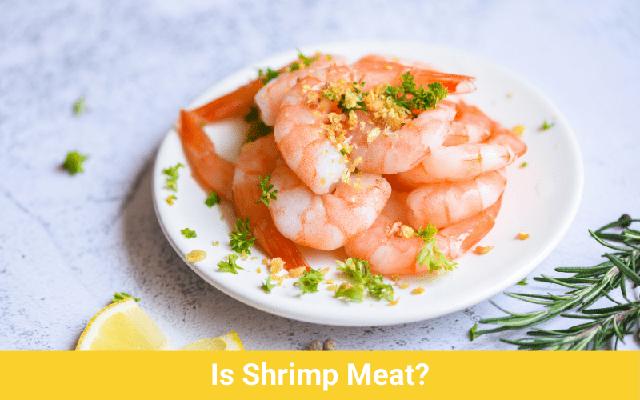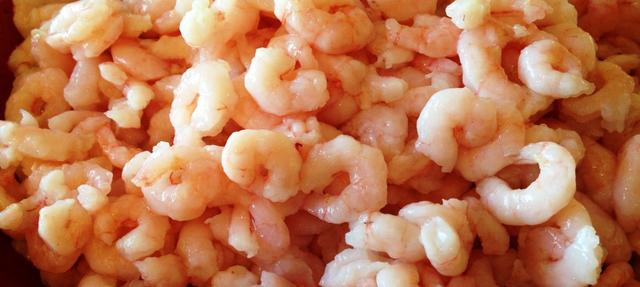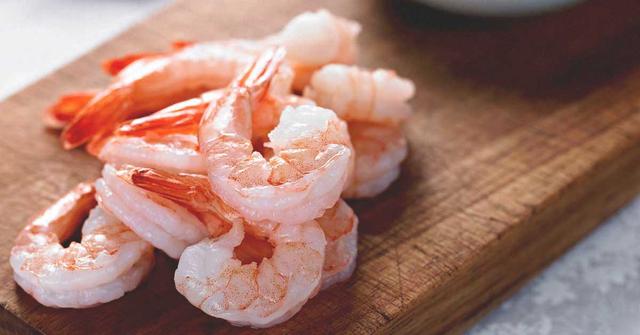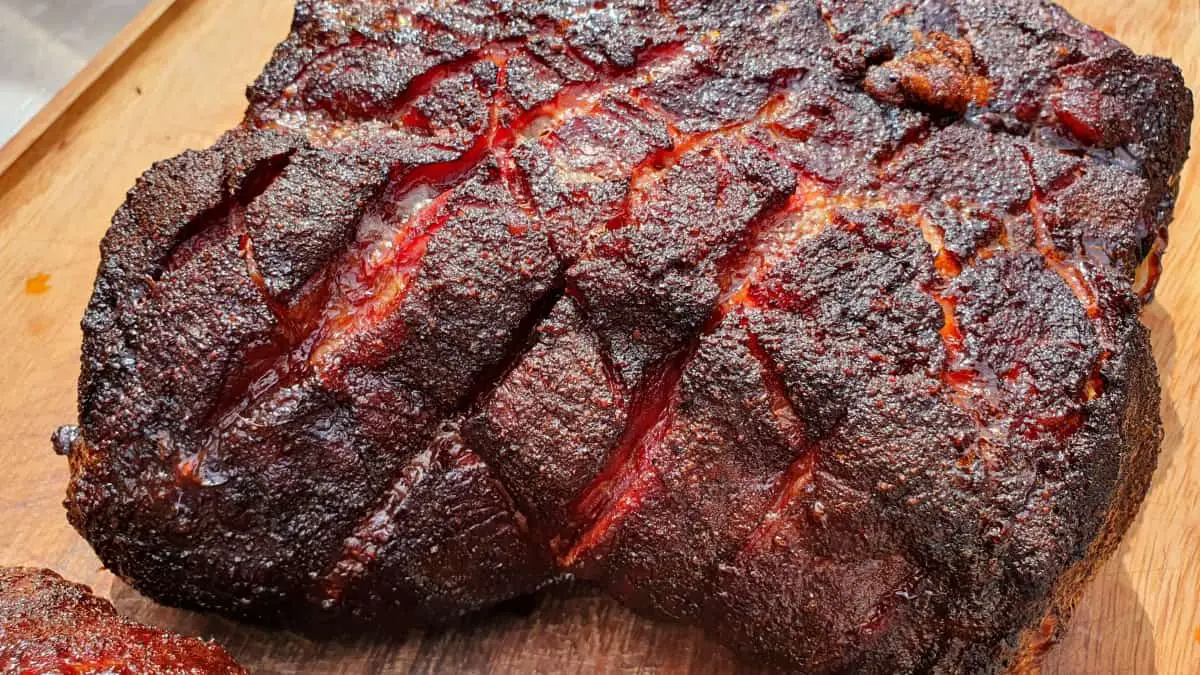
“Discovering the Truth: Is Shrimp Meat? Unraveling the mystery behind this delectable crustacean’s categorization as seafood or meat, and exploring its nutritional profile and culinary versatility. Dive into the fascinating world of shrimp to uncover the truth behind its classification.”
Is Shrimp Meat? Everything You Need to Know

Shrimp, biologically speaking, is considered meat as it is the flesh of an animal. However, in modern terms, shrimp is classified as seafood rather than meat. The distinction between seafood and meat can vary depending on cultural and religious beliefs. Religions such as Catholicism and Judaism may have dietary restrictions that classify shrimp differently from other meats. For example, Jewish dietary laws consider fish with scales and fins as permissible to eat, but since shrimp lack these characteristics, they are not consumed by those following kosher guidelines.
It’s important to note that the definition of meat according to the Oxford dictionary refers to the flesh of an animal. Shrimp falls under this definition, but in everyday use and according to modern interpretations, meat is often more narrowly defined as butcher’s meat like chicken, beef, or pork. Additionally, different religions may have their own classifications for what is considered meat or permissible food.
In conclusion, whether shrimp is considered meat or seafood depends on various factors such as cultural beliefs and personal opinions. Biologically speaking, shrimp is classified as meat due to its nature as the flesh of an animal. However, religious considerations and contemporary definitions may categorize it differently.
What is Meat?

Meat, defined by the Oxford dictionary, is the flesh of an animal. It typically includes beef, mutton, pork, or chicken. From a biological standpoint, shrimp can be classified as meat since it is the flesh of a crustacean. However, modernly, shrimp is widely considered seafood rather than meat.
For religious individuals, there may be disagreement on whether shrimp should be classified as meat. Religions like Catholicism and Judaism have dietary restrictions that exclude certain types of meat from their consumption. Shrimp, lacking scales and fins like fish, is not considered fish according to Jewish dietary laws. Catholics may also abstain from eating meat on certain days or during specific periods like Lent.
What are Shrimps?

Shrimps are small, free-swimming crustaceans with elongated bodies. They are commonly harvested for food and are similar to prawns but have distinct differences. Shrimps typically feed on microscopic animal and plant material and are found in various marine environments, from the Atlantic Ocean to the tropics of the Caribbean. There are over 2,000 different species of shrimp, making them a diverse group within the crustacean family.
Shrimps play a crucial role in their ecosystems as they serve as a vital food source for fish, crabs, whales, dolphins, sea urchins, and other marine life. They contribute to the balance and sustainability of marine environments. However, the classification of shrimp as either meat or seafood is subjective and varies depending on religious beliefs or personal opinions. Biologically speaking, shrimp is considered meat due to it being the flesh of an animal. Nevertheless, modern definitions often categorize shrimp as seafood rather than meat.
Is Shrimp Considered a Meat?
Shrimp is biologically classified as meat, but in modern times, it is commonly referred to as seafood rather than meat. While religious beliefs may disagree with this classification, from a biological standpoint, shrimp is indeed considered meat. Meat is an important source of protein in our diet and has played a significant role in the development of human intelligence. However, the distinction between seafood and meat can vary depending on cultural and religious practices.
Shrimp are small crustaceans that are similar to prawns but have distinct differences. They are an essential part of marine ecosystems and serve as a vital food source for various sea creatures. With over 2,000 different species of shrimp found worldwide, they thrive in diverse marine environments. The debate over whether shrimp should be classified as meat or seafood stems from different interpretations of the term “meat” based on cultural, religious, and linguistic factors.
In conclusion, while some may classify shrimp as meat due to its biological composition, others consider it seafood based on cultural or religious beliefs. The definition of meat can vary depending on individual perspectives and interpretations. Regardless of its classification, shrimp remains a popular choice for appetizers and is enjoyed by many at gatherings and parties.
FAQs
Is shrimp considered meat or seafood?
The classification of shrimp as either meat or seafood can vary depending on religious beliefs, personal opinions, and definitions. Biologically speaking, shrimp is considered meat as it is the flesh of an animal. However, in modern usage, shrimp is commonly referred to as seafood rather than meat.
Why do some religions not consider shrimp to be meat?
Some religions, such as Judaism and Catholicism, have dietary restrictions that exclude certain types of food from being classified as meat. In Judaism, fish with scales and fins are considered pareve (neither milk nor meat) and can be consumed. Since shrimp lack scales or fins, they cannot be consumed by those following Jewish dietary laws. Similarly, Catholics abstain from eating meat on Lenten Fridays but may still consume seafood like shrimp during this time.
Can raw shrimp be eaten?
No, raw shrimp should not be eaten due to the risk of foodborne illnesses such as botulism. Consuming raw shrimp can lead to symptoms like upset stomach, nausea, fever, and chills within a few hours. It is important to cook shrimp thoroughly before consuming to ensure safety.
What does deveining shrimp mean?
Deveining shrimp refers to the process of removing the dark dorsal vein, also known as the digestive tract, from a shrimp. This vein runs along the back of the shrimp and can appear as a long line. Deveining is done to improve the appearance and taste of the shrimp, as some people find the vein unappetizing. To devein a shrimp, you can use a small paring knife or scissors to make a shallow cut on the back of the shrimp and then remove and discard the vein. However, if you cannot see the vein in your shrimp, there is no need to worry about deveining it.
Are shrimp and prawns the same?
Shrimp and prawns are similar but different crustaceans. While they share some similarities, there are also a few key differences between the two. Both shrimp and prawns belong to the order Decapoda and have a similar body structure with an elongated shape. They are both commonly harvested for food and can be found in both saltwater and freshwater environments.
However, there are some distinct differences between shrimp and prawns. One noticeable difference is in their physical appearance. Prawns tend to have longer legs compared to their body size, while shrimp have shorter legs with pincers at the end.
Another difference lies in their habitat preferences. Shrimp are found in almost every marine niche, from the Atlantic Ocean to the tropics of the Caribbean, whereas prawns are often found in freshwater environments such as rivers, lakes, and ponds.
Can you eat raw shrimp?
It is not recommended to eat raw shrimp due to the risk of foodborne pathogens such as botulism. Consuming raw shrimp can lead to severe illness with symptoms like upset stomach, nausea, fever, and chills. It is important to cook shrimp thoroughly before consuming them to ensure they are safe to eat.
Final Thoughts
In conclusion, the classification of shrimp as meat or seafood is subjective and can vary depending on religious beliefs or personal opinions. Biologically speaking, shrimp is considered meat since it is the flesh of an animal. However, modern definitions often categorize shrimp as seafood rather than meat. Religions such as Catholicism and Judaism have specific dietary restrictions that may not include shrimp as part of their definition of meat. Ultimately, whether you consider shrimp to be meat or seafood depends on your own perspective.
In conclusion, shrimp is indeed considered a type of meat due to its muscular texture and nutritional composition. Despite being small in size, shrimp provides valuable protein and essential nutrients. Whether used in various culinary dishes or enjoyed as a standalone protein source, shrimp can be classified as a form of meat.
Learn More About Grilling
If you want to learn more about grilling, check out these other helpful resources!











